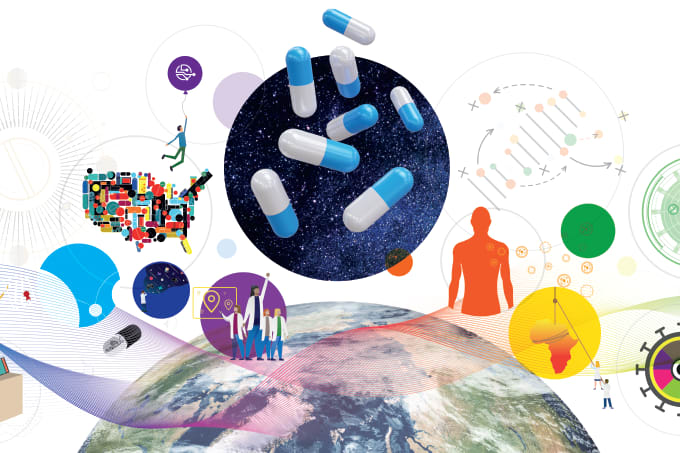Christoph, could you give us a potted history of Site Management Analytics?
So in some ways, the history of Site Management Analytics goes back to the beginning of Merck’s 350 years in business! Back then, Merck guaranteed customers that purchased chemicals were subject to quality control for the first time. Of course, it would be virtually impossible to list all the changes and milestones since then – but it’s been a road of continual improvement and innovation, founded in quality. In my 18 years at Merck, the role of Site Management Analytics has moved away from routine quality control towards more closely supporting our research and development teams with advanced – and still high quality – analytical capabilities. Today, analytics is an integral part of R&D at Merck; indeed, the border between the two is much less defined than it was even 10 years ago. Today, we do remember our roots with some specialized quality control – for example, when less common techniques, such as NMR or X-ray diffraction, are needed. Merck’s business units – performance materials, life sciences and healthcare – are all subject to different regulations as the sectors deal with different products ranging from, for example, liquid crystals for displays to pharmaceutics, so they all have their own respective quality management system. On the other hand, the business is driven by a stronger need for analytics for R&D, which has led Site Management Analytics to focus on R&D activities. The shift has also been driven by trends in miniaturization and automation. To give an example; as you bring a small molecule candidate through clinical development, you need to gain information for crystal form selection, so we do a significant amount of solid-state characterization work. Fifteen years ago, you’d perform different crystallization experiments under different conditions at perhaps a 5 g scale and then send samples to our lab for analysis. Today, the same task is done at a much smaller scale – more like 10 mg and using much more experiments. From these, we gain much more information about the behavior of a compound. The crystallization experiments and analysis of such a higher number of samples are conducted in the same laboratory to maximize efficiency and leverage automation.

How does Site Management Analytics help its internal customers?
Our work spans three core areas across Merck R&D – routine analytical support, project support and innovation, with the latter two taking on the prominent role in recent years. When it comes to routine support, we’re responsible for making relatively simple measurements, but we use sophisticated tools, such as NMR. Here, turnaround times, cost and quality are the three drivers. In project work, we will be tasked with solving more complex problems, which not only involves closer collaboration with our customer – the R&D team – but also other laboratories across Site Management Analytics. As an example, selecting the right crystal form of an active pharmaceutical ingredient is key when entering clinical development. Therefore, many labs doing crystallization experiments and characterizing the crystals using a broad range of analytical techniques, such as X-ray diffraction, differential scanning calorimetry, thermogravimetry, dynamic vapor sorption, measuring solubility and dissolution rate, particle size and shape, nuclear magnetic resonance, infra-red, Raman, and mass-spec, are brought together. The work is done in Site-Management Analytics involving a team of medicinal chemists, people from drug metabolism and pharmacokinetics, process development, regulatory affairs and pharmaceutical development. The answer we deliver is which crystal form should move into clinical development based on scientific consideration. Finally, by “innovation” we really mean technology scouting and the need to consider what our customers may request or need in the years ahead. In other words, to ensure that our R&D continues to exist at the forefront, our analytical support must also be at the cutting edge. And so over the years, we’ve needed to add capability to support work in emerging areas – proteomics, crystal design, gene editing, for example. I have to say that, when it comes to analytical science, remaining competitive means building, developing and maintaining an external network; going to conferences, reading journals, making contact with external biotech companies, CROs, and universities are all key to us offering the best analytical support possible for Merck. It matters that we are an integral part of the scientific society.





